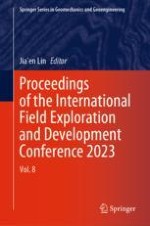2024 | OriginalPaper | Chapter
Research on Microscopic Production Characteristics of Oil in Tight Sandstone Reservoirs by Different CO2 Injection Methods
Authors : Jun-jie Xue, Chang-hao Yan, Xiao-yong Wen, Ping Yi, Teng Li, Zhi-lin Cheng, Chen Wang, Hui Gao
Published in: Proceedings of the International Field Exploration and Development Conference 2023
Publisher: Springer Nature Singapore
Activate our intelligent search to find suitable subject content or patents.
Select sections of text to find matching patents with Artificial Intelligence. powered by
Select sections of text to find additional relevant content using AI-assisted search. powered by
